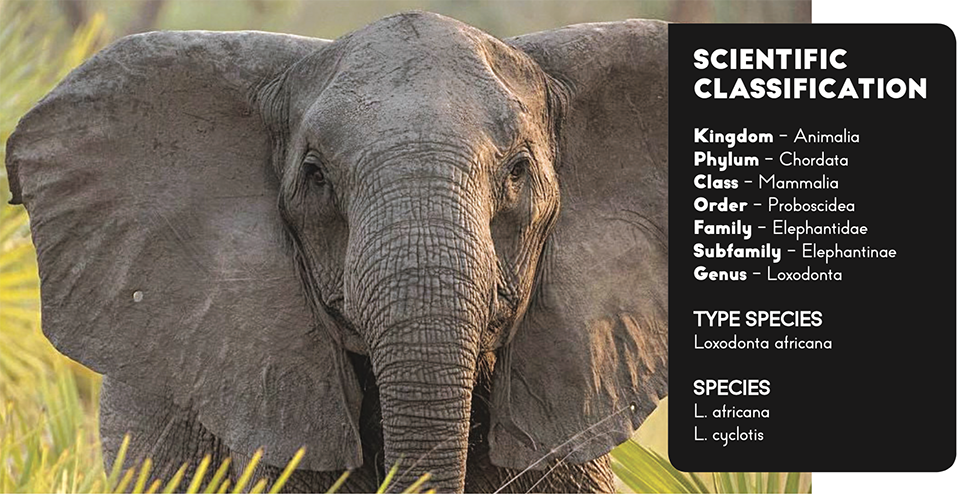The Elephants of Mozambique’s Gorongosa National Park have adapted to the pressures of poaching in a way that has baffled geneticists and other scientists: A third of their younger females born after 1992 never developed tusks.
During the civil war that ravaged Mozambique for 15 years, poaching was heavily practiced, as any
money earned from selling ivory could easily be used to buy guns or ammunition. The prime targets for poachers are the males of the group, which generally have the largest tusks and therefore yield the most ivory. However, once the tusked males of the group have been depleted, poachers tend to turn their attention to the older females of the group, which have smaller tusks than males but are still worth hunting to the poachers.
But how exactly did tuskless Elephants come to exist, and what does poaching have to do with this phenomenon?

WHY TUSKS MATTER
Tusks are basically overgrown teeth, and Elephants who have tusks use them to strip bark from trees for fiber in their diet, to dig for water or salt in the ground, or to help males compete with other males for females.
The roles that the Elephants perform with their tusks are vital for other animals. For example, certain
lizards prefer making homes in trees that have been knocked over by Elephants. The holes that they dig in order to access water are important for a variety of other species as well.
ADAPTING TO SURVIVE
In order for Elephants to evolve without tusks, the evolutionary advantages of not having tusks should be greater than those gained from possessing trunks. In this case, the daily tasks that Elephants use their tusks for are simply trumped by the need for the Elephants to survive, and not having tusks immediately takes them out from under the poachers’ crosshairs.
The tuskless Elephants of Mozambique are not unique in Africa, either. In South Africa, a full 98% of the females born in Addo Elephant National Park were tuskless in the early 2000s.
The signs of human intervention on the evolution of the African Elephant are obvious. When left alone, 2-4% of female African Elephants are born tuskless.
So, what happened?
Decades ago, some 4,000 Elephants lived in Gorongosa, says Joyce Poole, an Elephant behavior expert and National Geographic Explorer who studies the park’s pachyderms. But those numbers dwindled to triple digits following the civil war. New, as yet unpublished, research she’s compiled indicates that of the 200 known adult females, 51 percent of those who survived the war — animals 25 years or older — are tuskless. And
32 percent of the female Elephants born since the war are tuskless.

Josephine Smit, who studies Elephant behavior as a researcher with the Southern Tanzania Elephant Program, says that among the female Elephants she tracks at Ruaha National Park, an area that was heavily poached in the 1970s and 1980s, 21 percent of females older than five are tuskless.
As in Gorongosa, the numbers are highest among older females. About 35 percent of females older than 25 are tuskless, she says. And among Elephants ages five to 25, 13 percent of females are tuskless.
A 2015 study conducted by Duke University and the Kenya Wildlife Service compared the tusks of Elephants captured there between 2005 and 2013 with those of Elephants culled between 1966 and 1968 (that is, before significant poaching took place in the late 1970s and early 1980s) and found significant differences. Survivors of that period of intense poaching had much smaller tusks — they were about a fifth smaller in males and more than a third smaller in females.
The pattern repeated in their offspring. On average, male Elephants born after 1995 had tusks 21 percent smaller than the males from the 1960s, and 27 percent smaller than the females from that period. According to the study’s authors, “Although our evidence for the role of genetics on tusk size is indirect,” studies of mice, baboons, and humans have similarly established that incisor size — homologous to a tusk in Elephants — is heritable and has “substantial genetic influence.”
WHAT’S SO CONFUSING ABOUT TUSKLESSNESS?

Tuskless Elephants are completely healthy otherwise. So, why have only the females evolved to be tuskless? We never see tuskless male Elephants in the wild, says Poole.
Poole says, “I’ve observed tuskless Elephants feeding on bark, and they’re able to strip bark with their trunks, and sometimes they use their teeth.” They may also be relying on other Elephants’ inadvertent help, she says. Perhaps the Elephants are targeting different kinds of trees that are easier to strip, or trees that have already had some stripping by other Elephants, giving them a prepared leverage point for tearing off bark.
“If you look at Asian Elephants, females don’t have tusks at all, and depending on which population you look at in which country, most males are also often tuskless,” Poole explains. Exactly why the Asian and African Elephant populations have such different rates of tusklessness remains






